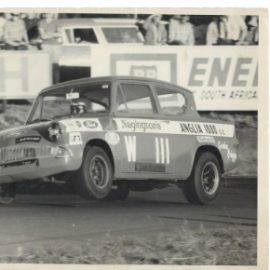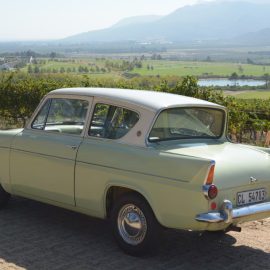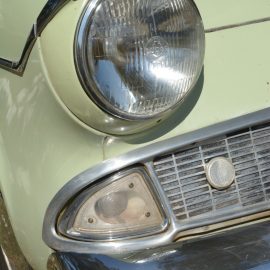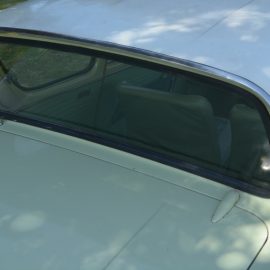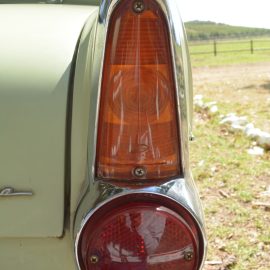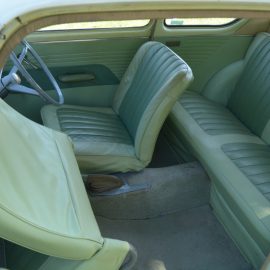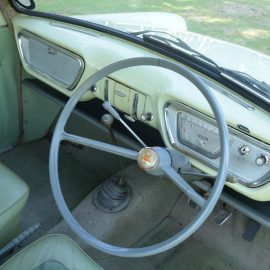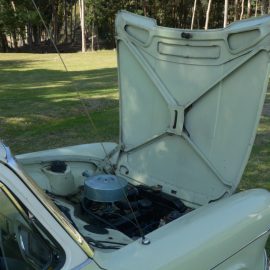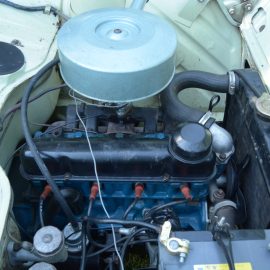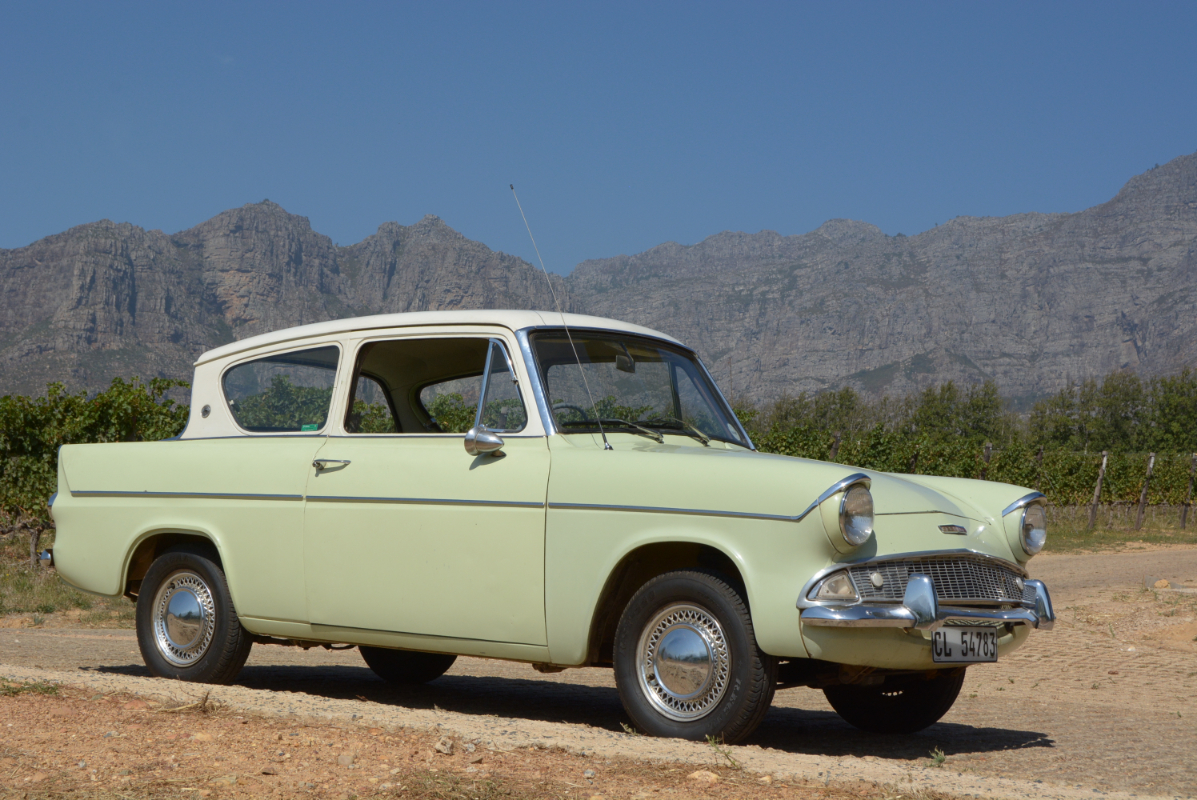
02 Oct Anniversary Celebration: Ford Anglia
A regular feature covering vehicles in the FMM collection that are celebrating an anniversary during 2022. This month Mike Monk takes a different angle…
When Ford UK introduced the Anglia in October 1939, it was the smallest model in the company’s range. It was simple and cheap, a forerunner of what we would call today an entry-level model, and was a foundation stone in the company’s success in the post-war years.
There were essentially four generations of Anglia, starting with the E04A that lasted through the war years until 1948 when a facelifted version, the E494A, appeared, which was then Britain’s lowest-priced four-wheel car. During this time, the Anglia and its four-door brother, the Prefect, variously became known as ‘sit up and beg’ – because of the driving position mimicking a dog sitting up and begging – and ‘puddle jumper’ – because of the car’s upright stance and lively suspension that caused it to hop and skip. A facelifted model continued for another six years before a completely new, unashamedly ‘three-box’ Anglia 100E was launched in 1953.
Then in 1959 came the Anglia 105E, quite a radical change in looks from its predecessor, with styling elements borrowed from the 1958 Lincoln Continental, not least the backward-sloping rear window that marketers claimed would ‘keep the window clear in rain’… The headlights wore fashionable eyebrows while the rear fenders sported tiny fins that carried vertical ‘rocket ship’ tail-lights. Oh, and the forward-hinged bonnet was something novel, too. Just because it was cheap and cheerful, the 105E was far from being drab.
The 105E was the platform for a new cast-iron four-cylinder 997cc engine that was to be dubbed the ‘Kent’ motor. With pushrod overhead valves and independent inlet and exhaust ports, it produced 29 kW at 5 000 r/min at 75 N.m of torque at 2 700. In 1967 it was reworked to have a crossflow cylinder head. Not only was the engine a step up in sophistication, the 105E was the first British Ford to have a four-speed gearbox, which had synchromesh on the top three ratios.
There were two saloon models, Standard and Deluxe, which boasted chrome side strips, rear light surrounds and wheel trims, a full width chrome grille, a glove box lid and twin sun visors. Windscreen wipers were now operated by an electric motor, unlike the notoriously inadequate vacuum-operated items of the earlier cars. The car was an instant hit. In 1960, the first full year of production, 191 752 Anglias left Ford’s Dagenham plant, setting a new production-volume record for the company.
British Motor magazine tested a car in 1959 and recorded a top speed of 118,8 km/h, a 0-96 km/h time of 26,9 seconds and a fuel consumption figure of 6,86 litres/100km. In April 1960, South Africa’s CAR magazine achieved 117,5 km/h, 26,6 seconds and 6,39 litres/100 km in a road test of a Deluxe – remarkably similar figures.
The 105E was introduced to South Africa in 1960. FMM’s example is a 1967 Deluxe that was donated by Miss A M de Bruyn of Pretoria to the Heidelberg Motor Museum in August 1997. (The Heidelberg collection was the foundation of the Franschhoek Motor Museum.) This 55-year-old car has been left in its totally original and unrestored condition. Slight differences in shade of the pale green lower body colour – the roof is a contrasting beige – suggesting there may have been some repair work carried out in its life, but there is no obvious sign of accident damage.
It does one good to occasionally have the opportunity to drive something that is as honest as the day it was built, as this car proved. Naturally, the paintwork lacks its original lustre but it still looks distinctive. While all-round panel fit is not perfect, everything opens and closes without strain, and the body-colour-matching vinyl upholstery is still in good condition. The cabin is light and airy and there is a minimum of creature comforts – a single courtesy light above the rear-view mirror, opening rear side windows and, er, that’s it, really… This car has a period bullet-shaped racing mirror mounted on the driver’s door, and the whip aerial indicates a radio was fitted at some time. A stylish Isosceles trapezoid instrument panel (yes, really) houses an 80-mph speedo, fuel and temperature gauges plus warning lights for oil, generator, main beam and indicators.
Starting up, there is nothing distinctive about the engine note and getting under way is effortless. Performance is not the car’s strong point but the gearing quickly gets the car up to cruising speed where it thrums along contentedly. This car is surprisingly rattle-free. The large, thin-rim, plastic (Bakelite?) two-spoke steering wheel is light in operation and the 105E goes and handles without any fuss or drama. Arched front fenders point the way ahead… Anglias helped put Ford on the motor sport map, and locally Gordon Briggs driving his Broadspeed-spec car is perhaps the best-known exponent of Anglia prowess; his ‘front wheel in the air’ cornering style was legendary.
A total of 1 594 486 Anglias had been produced before the Mk.1 Escort took over as Ford’s entry-level car in 1968. Simple, safe and significant in the history of affordable motoring, it is easy to understand why Anglias were so popular




